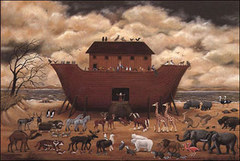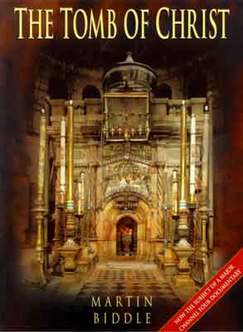The Great Flood
Columbia University geologists William Ryan and Walter Pitman wondered what could explain the preponderance of flood legends—not just in the Bible but in other ancient sources as well. They have advanced a theory that, as the Ice Age ended and glaciers melted, a wall of seawater surged from the Mediterranean into the Black Sea.
Now maritime explorer Bob Ballard is combing the floor of the Black Sea in search of the remains of ancient dwellings, which would buttress this new theory. Follow his progress at this intriguing site from National Geographic: Ballard & the Black Sea: the Search for Noah's Flood |
The Church of the Holy Sepulchre

The Church of the Holy Sepulchre, located in the Christian quarter of the Old City of Jerusalem, was originally built by Saint Constantine the Great, the first Christian emperor of Rome. The church, dedicated in 336 AD, encloses both the site of Christ's crucifixion (Golgotha), and the rock-cut tomb in which He was buried and from which Christians believe He was resurrected.
Today, the actual Tomb or "Edicule" at the heart of the Church is principally controlled by the Greek Orthodox Patriarchate of Jerusalem and is currently the subject of a thorough archeological investigation. Visit this wonderful interactive site from the PBS series Secrets of the Dead II: The Tomb of Christ |